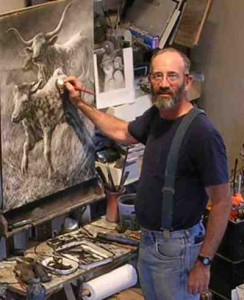Review by Lynda La Rocca
Christmas Lore – November 2007 – Colorado Central Magazine
More Christmas Angels
by Rosemerry Wahtola Trommer
Published in 2007 by Red Rock Press
ISBN 193317613X
and
The Christmas Animal Book
by Clint Viebrock
Published in 2007 by Red RockPress
ISBN 978-1-933176-11-6
I LOVE CHRISTMAS. Not the materialistic frenzy that frequently defines contemporary celebrations, but the spirit of Christmas.
And More Christmas Angels and The Christmas Animal Book capture that spirit in a way that will make readers want to deck the halls year-round.
These tiny (5¼ x 5¼ inches), hard-cover stocking-stuffers trace the history of Christmas cards and muse upon the significance and symbolism of figures that appear frequently in the earliest cards, namely angels and such “Christmas-y” creatures as sheep, donkeys, and of course, reindeer.
Each book is illustrated with full-color prints of some four dozen different antique Christmas cards dating from the late 1870s to the mid-1920s. Produced in both Europe and the United States, these cheerful, gilded and embossed greetings were originally posted from places as diverse as Belgium and Bulgaria, Missouri and Maine.
Both books touch upon the origins of the custom of sending Christmas cards, which began in England in the 1840s when a British nobleman too busy to write individual Christmas letters commissioned an artist to design and mass-produce an illustrated card to send to his correspondents. Within a couple of decades, this idea had taken hold in Europe and spread across the Atlantic to North America, where the exchange of Christmas cards quickly became a widely accepted way to stay in touch with distant friends and relatives.
In More Christmas Angels, Telluride poet and writer Rosemerry Wahtola Trommer looks at how our ideas about angels — and our greeting-card depictions of them — have evolved over time.
From their Biblical origins as messengers of God, angels gradually came to be viewed as divine mediators, comforters, and guardians. As their roles changed, so did their appearance. By the sixth century A.D., angels were commonly represented with the now-standard wings and nimbus or halo of radiant light. During the Renaissance, masculine-looking angels began developing feminine characteristics, so much so that by the late 19th century, when angel mania was reaching a peak, these heavenly beings were considered the epitome of feminine grace and beauty.
Hence, many of the illustrations in More Christmas Angels feature golden-haired, rosy-cheeked, “adult” female angels– and their younger counterparts, the chubby, childlike cherubs. Some of these mature angels resemble mothers; one card, printed in Germany, shows a winged “angel-mom” standing with her children beside a decorated Christmas tree, her hand raised over them as if conferring a blessing.
My personal favorite was posted in Sweden; unfortunately, no date for its creation is given. It shows a lovely angel gowned in pink and green guiding a small boy and girl across a dilapidated wooden bridge stretched above a rushing waterfall. This card is strikingly similar to a work that has long intrigued me, a fresco of an angel guiding a lone child across a bridge that adorns Leadville’s 1879 Church of the Annunciation.
A card bearing the image of a child-angel holding a bouquet of white-and-yellow daisies and kneeling beneath the words, “Happy Be Your Christmas,” catches my fancy as much for its scrambled syntax as its charming illustration.
A card with a similar inscription in Clint Viebrock’s The Christmas Animal Book expresses more than the wish that, “Fair be all your days.” Its pastoral scene of a donkey waiting patiently while farmers load a cart with newly harvested crops recalls a way of life that was already disappearing from early 20th-century America. As people left farms for cities, Christmas cards featuring both barnyard and forest animals became increasingly popular, perhaps reflecting a yearning to return to simple country ways.
Viebrock, a resident of Telluride and Denver, deftly incorporates such tidbits about rapid social changes into his examination of the significance of animals in Christmas greetings. Since, for instance, the first Christmas cards were secular and not religious, it’s unlikely that sheep were meant to conjure visions of shepherds following a star to the manger where Jesus was born. Rather, sheep represented rural attachments, as did horses and even pigs. Curly-tailed porkers, some in formal dress and bearing bottles of wine, were a favorite Christmas-card animal, both because they were so readily anthropomorphized and because, in ancient times, pigs symbolized rebirth and rejuvenation.
As an avid birder, the chapter “Christmas Birds of a Feather” captivated me with its references to birds as symbols of enlightenment, peace, and the human soul. And birds on a Christmas card could certainly remind the recipient of the promise of spring.
But what about those reindeer pulling Santa’s sleigh? According to Viebrock, they were originally flying goats that drew the chariot of Thor (the ancient Norse god of thunder, weather, and crops) across the skies.
A few caveats: It’s frustrating to have to repeatedly scan a separate “Credits” page in each of these books for information on every card’s origin, production date, etc. It’s equally frustrating to read the same English-language verse twice while inscriptions in foreign languages are not even translated. And I would have appreciated an explanation of the spelling used in the title of the 450-year-old carol “The First Nowell.”
According to information I gleaned from a Northern Illinois University website, the word “Nowell” is an Anglicized version of “Noel,” the French word for Christmas. The song originated in southwest England’s Cornwall region, and the spelling of the title word was changed some time after 1870 for reasons that remain unknown.
But these are minor complaints. More Christmas Angels and The Christmas Animal Book are delightful expressions of a delightful season, combining history, folklore, and richly expressive artwork with a touch of whimsy– for a nostalgic look at Christmas not-so-long past.

